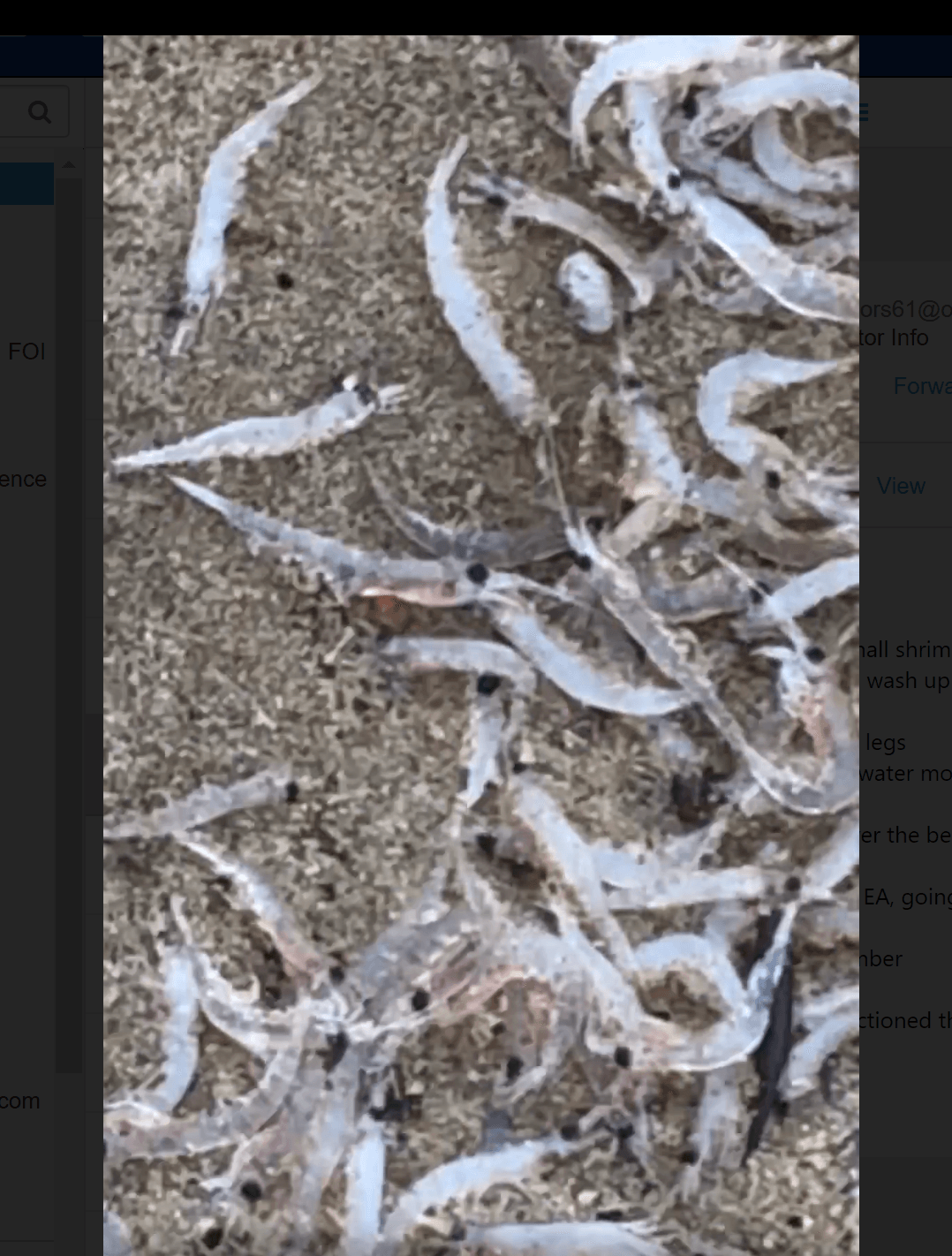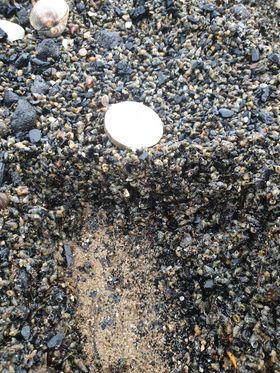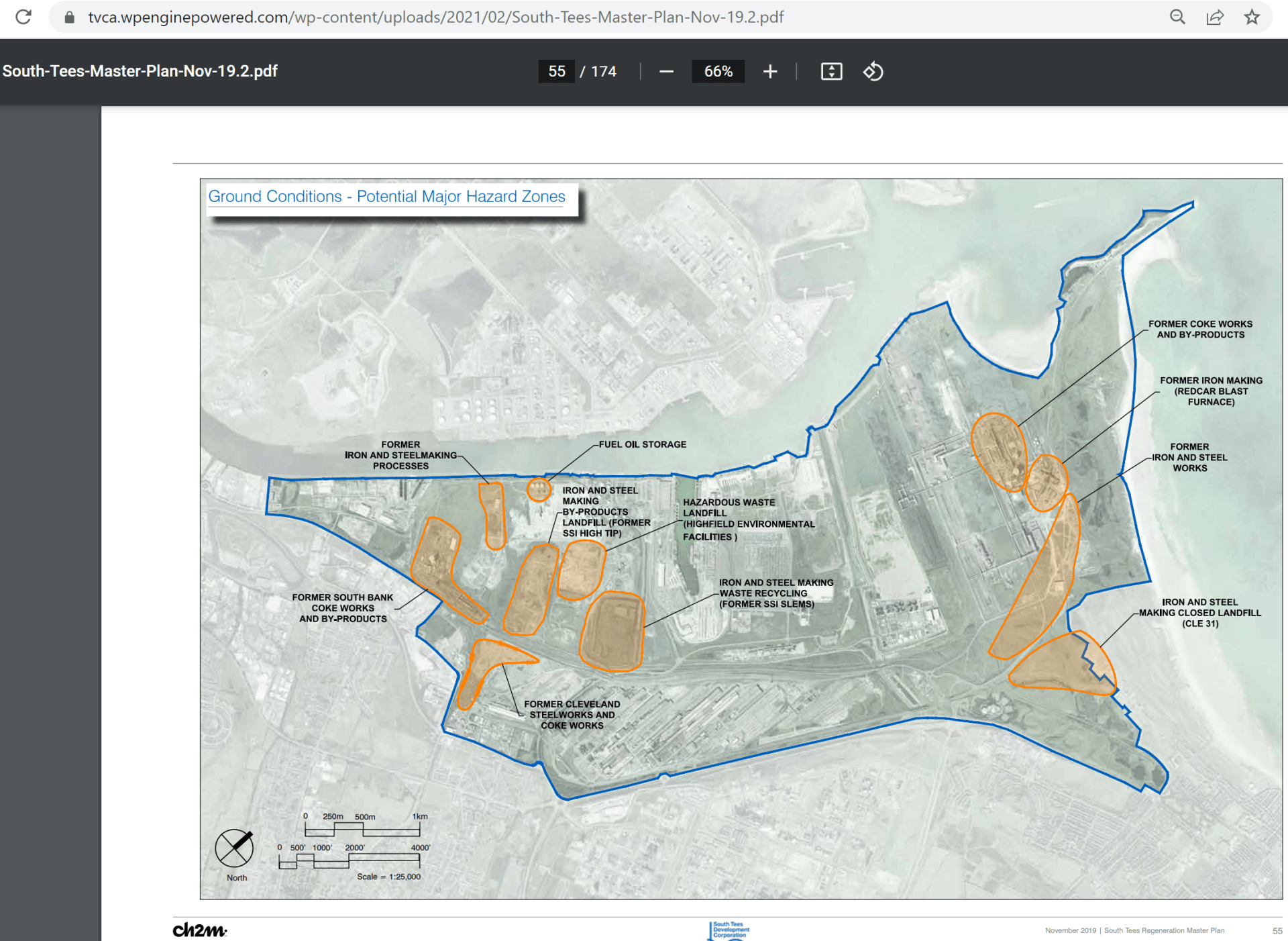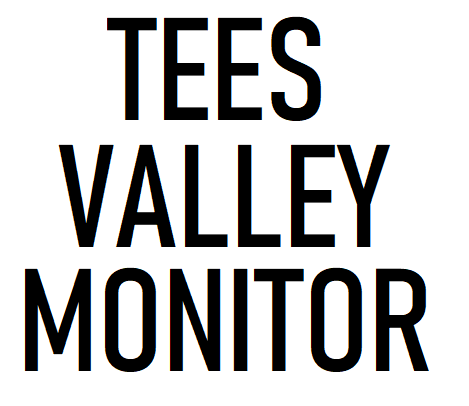Poison Earth
Part 2:
Government
Shields Polluters
on Teesside

Construction work and dredging at Teesworks. Photo courtesy of Grecko Indie Media
Scott Hunter
20 November 2022
In the same week that a statement on the marine die-off in Tees Bay was issued on behalf of the Secretary of State for the Environment, one of our readers visited the beach at South Gare. While walking there he came across piles of tiny shellfish. So, he took some photos and sent them to us. We had a look at them and suggested that he report this to the Environment Agency, which he then did.
We had two reasons for recommending this to him. One is that, on its website, the Environment Agency itself recommends that such incidents be reported to them; the other is that, given that interest in marine die-off in this region is now being discussed at the highest level of government, we thought they might be more interested than normal in episodes such as this.
It turns out, however, that they aren’t.
Our reader reported back to us with this account of the EA response:
“ … they said, not sure what’s the cause and they would only deal with it if there is obvious pollution in river or dead or dying fish or crabs etc.”
As this seemed rather dismissive, we emailed their media team to check. Specifically, we asked them if an officer had visited the site, whether samples had been taken for analysis, and if so, what the results were. Shortly we received a response which was that we had come through to the wrong department and directed us to general inquiries instead. We forwarded our email there and received a reply that this was being treated as a Freedom of Information request, and they would respond withing twenty working days. We tried the media team again. This time they responded that they are a small media team and have to pass some things on to general inquiries. We suspect this means that the EA may not have done anything at all and have no intention of responding to our reader’s report. (We should point out that their latest email proposes that to draw such an inference is unwarranted).
What we didn’t mention to them was that we had predicted that their response would be non-committal, so we visited the beach ourselves, took some samples and have now handed them over to the North Sea Fishing Collective who will have them analysed, along with samples of other recent marine die-off at Greatham Creek, Hartlepool Harbour and elsewhere in the region.
And, on 19 November, there was another report. This time it is of shrimps being washed up in their millions at Crimdon Dene, just north of Hartlepool.


Left: shrimp at Crimdon Dene, 19 November. Right: unidentified crustaceans at Bran Sands, 15 November
A pattern is emerging in these die-off events – that on each occasion a narrow range of species is affected. Crab and Lobster around the bay in autumn 2021; razor clams and mussels at Saltburn in September; sprats at Greatham Creek in September; whelks (possibly) at Bran Sands, and finally shrimp at Crimdon Dene.
Welcome to the Tees Valley where protecting the environment has become a DIY job.
Actually, it’s worse than that. In the same week that the latest die-off episode appears to have been treated with indifference by the EA, the Secretary of State for the Environment has written a letter giving carte blanche for efforts to pollute the North Sea to be intensified.
The Secretary of State recommends …
The Secretary of State’s letter is a remarkable document. It is in response to the recommendations of the Environment Committee which heard evidence from a number of sources – Defra representatives, the harbour authority, academics and fishing industry representatives - in a hearing on 25 October. Following that hearing, the Committee recommended that a panel of independent experts be set up to examine the evidence for the causes of the die-off. The problem being that there is a dispute between Defra, who have concluded that the die-off was the result of a harmful algal bloom, i.e. natural causes, and local fishers who claim that it was the result of contamination with the chemical pyridine. The Secretary of State has now issued an instruction that this panel be created. Which is good, but hardly remarkable. The remarkable bit is what comes next.
The role of the panel is “to assess the evidence and consider all explanations for sealife mortality, including the possible role of pyridine. She [the Secretary of State] has asked that this work is completed in a timely fashion, and the findings of the panel will be published.”
Following this, there is a statement of how Defra has continued to undertake research since the original incident last autumn (omitting to mention that their representatives singularly failed to present to the committee any detail or results from these researches). It dismisses suggestions made by one of the academics, Dr Gary Caldwell, about the possible source of the pyridine (failing to notice that Dr Caldwell made these remarks in passing, and that his evidence was to present research findings that pyridine was the cause of crustacean death in the bay).
It goes on to explain that pyridine is not a known contaminant for estuary sediment, that it is a water pollutant, and that no evidence had been found by the authorities of the presence of the chemical in estuary waters at the time. And ends with,
“We will seek advice from the external expert panel to assess whether additional measurements of pyridine in the sediments and waters of the Tees region would be beneficial, recognizing that a comprehensive survey across the full region would involve significant costs which would require adequate justification and clarity about the usefulness of resulting data.”
In other words, the Secretary of State is setting up an independent panel of experts, and to help them along in their task has provided them with the set of conclusions and recommendations they are to make when they finally report back to her. Presumably this is because she wants their report compiled and published “in timely fashion”, so this will speed things up a bit for them.
They are to conclude that all talk of pyridine as the cause of death is complete and utter nonsense, and there is absolutely no need to be spending any money on taking samples from across the region because that would be far too expensive.
They are unlikely to take into consideration any other species die-off as the North Sea Fishing collective is only now in a position to commission analysis. So there are no competing explanations for consider (unless Defra blaming the razor clam die-off at Saltburn as due to bad weather counts as an explanation).
A Helping Hand for the Panel of Experts
In actual fact, were the panel to commit to going through the motions of detecting pyridine sources, they might find it easier than they think. One very useful tool for doing so is the map below:

In its Masterplan, the South Tees Development Corporation has helpfully marked the places where there are, or have been, coke ovens, where pyridine was produced as a by-product and where the surrounding area is therefore contaminated with it. It also shows hazardous waste landfill sites (which may be of some use in the future, as we believe that the sediment extracted from the estuary which was prohibited from disposal at sea remains on the site. At High Tip, to be precise).
It is unfortunate that they are unlikely to look in any of these places as they have been directed to consider only estuary sediment, not the land adjoining it. They therefore do not have to consider the possible discharge of contaminants from that site brought about by disturbance both through construction work and through various demolitions on site.
In those areas they would also find other contaminants that are by-products of coking, such as naphthalene, phenanthrene, benzene and a range of dissolved metals. And were they to listen again to Dr Caldwell’s evidence they would hear that pyridine is not the only contaminant at issue, as, while he proposes that it was responsible for the recent episodes of marine die-off, it may be other chemicals present in the vicinity that will be problematic in the future. This is one of the reasons for his calling for a temporary moratorium on dredging.
Consideration of the dangers inherent in dredging highly contaminated sediments is another task that has been lifted from the panel’s shoulders by the Secretary of State. So, on the one hand,
“On the basis of previous evidence, we have not previously concluded that more evidence is needed. The views of the Expert Panel will steer consideration of further action.”
But on the other,
“The MMO have conducted marine licence inspections on the dredging works in question and following this they remain satisfied that the works are being conducted in line with the relevant marine licence(s). Inspections on the licenced activities will continue on a periodic basis throughout the length of the licence.”
Job done. Another paragraph for the independent panel of experts to copy and paste into their report, which is, in any case, unlikely to see the light of day before dredging for the South Bank Quay is finished.
The MMO … Remain Satisfied with the [Dredging] Works …
Should the panel of experts visit the estuary, they may be able to witness the work that the MMO remains satisfied with. We have obtained video material of work currently being undertaken.

Photo courtesy of Grecko Indie Media
Two diggers on the bank are lifting the sediment up and depositing it again right on the water’s edge, where it can readily fall straight back in again as soon as the November weather deteriorates. In the days after the footage was taken, there were around three days of very heavy rain.
A backhoe dredger a few metres from the bank is seen lifting the sediment from one place in the river and depositing it in another, thus causing maximum disturbance to the toxic material.
As part of Marine Licence Application, the South Tees Development Corporation submitted an Environmental Impact Assessment. It has this to say about dredging around the bank:
“The proposed scheme requires the excavation of soils/landside materials from the riverbank in front of the proposed new quay wall to create the berth pocket. There is therefore the potential for some of the soils to spill into the river during the excavation process as some of the material is likely to be excavated below the water line. To reduce the potential effects as far as possible, control measures would be put in place to reduce spill as far as possible and it is proposed to remove the material using a backhoe. This enables control over the excavation process and care will be taken to remove as much as possible at low water and therefore out of the water”. (para 7.5.4)
We see no evidence of ‘control measures … to reduce the spill as far as possible’. If anything, it is the opposite. The backhoe dredger is acting like a giant teaspoon in the water.
But the Secretary of State is already satisfied. Very satisfied that the dredging is safe, that the Development Corporation site is safe, and that the government’s flagship policy of desperately creating freeports is safe in her hands, that nothing will be allowed to stand in its way.
